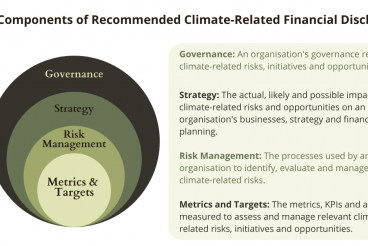Financial sector professionals see the EU’s Sustainable Finance Disclosure Regulation (SFDR) as the start of a much broader trend that will embed sustainability as an integral part of the industry’s rulebook and practice. But what will come next? And what should financial market participants focus on now to prepare for the future?

This is the second of three articles, part of our Sustainability Matters series, in which three legal experts give their views on the SFDR, its implementation and the wider ESG and sustainable finance sector. In the first part, which we recommend you read first if you haven’t already, they discussed how the financial industry can expect the SFDR to evolve and highlighted best compliance practice. Now, in Part 2, Leonard Ng (Sidley Austin LLP), Reyhan Gülec (Norton Rose Fulbright) and Sebastiaan Hooghiemstra (Nauta Dutilh) examine the future of sustainability legislation in the EU and elsewhere.
What future developments in EU sustainability legislation should members of the financial services industry be focusing on now?
Given the current lack of clarity regarding future EU sustainable finance legislation, the industry has little choice but to adopt a stringent regulatory watch process.
Hooghiemstra advises that in the very short term, “implementation of the Level 2 regulatory technical standards will be of the utmost priority for financial market participants and advisers. The same applies to compliance with the three delegated acts relating to the Paris-aligned benchmarks, as well as the climate transition benchmarks published in December 2020.”
Güleç recommends preparing for the next steps arising from the Taxonomy Regulation, which will define which economic activities qualify as environmentally sustainable. From a practical perspective, she says, the regulation envisages two phases in line with the delegated acts timeframe.
The first phase focuses on the climate change mitigation and adaptation objectives. While these were supposed to be adopted by December 31, 2020 and apply from January 1 next year, the Commission is late and a delay in the timetable seems likely. The second phase, which concerns the rest of the objectives, is due to be adopted by the Commission by December 31 this year and apply at the end of 2022.
Güleç also notes that although the Taxonomy Regulation is a welcome first step, “it only represents the ‘E’ in ESG and does not consider the social and governance components.” She advises keeping a watch on the next steps in the Commission’s Sustainable Finance Action Plan, especially as the social impact element is due to be addressed after 2021.
Looking beyond the SFDR and the draft regulatory technical standards, which are now due to apply from January 1 next year, as well as the Taxonomy Regulation, Ng encourages EU-based firms to consider the proposed revisions to Level 2 rules under MiFID II and the UCITS and AIFM directives – similar to the Level 2 standards under the Solvency II and Insurance Distribution directives.
“These revisions will require firms authorised under these directives to adhere to sustainability considerations as part of their suitability obligations,” he says.
Some financial services firms should also focus on the EU Ecolabel for Retail Financial Products currently being developed by the European Commission, as well as the EU Green Bond Standard it is preparing as part of the Sustainable Finance Action Plan.
Says Ng: “The Ecolabel seeks to provide retail investors with a trusted and verified label to make informed investment decisions, at the same time incentivising financial institutions to develop products with a reduced or positive environmental impact.”
How does the evolution of sustainability rules in other parts of the world compare with EU initiatives? To what extent are other jurisdictions likely to copy or adapt European law?
Hooghiemstra believes that third-party countries must align to an extent with the EU’s approach, pointing out that the European Commission, in its Taxonomy Regulation FAQ, notes that the regulation – and, implicitly, the SFDR – inherently has extra-territorial reach.
Says the Commission: “The disclosure obligations for financial market participants in the Taxonomy Regulation apply to anyone offering financial products in the EU, regardless of where the manufacturer of such products is based.”
Hooghiemstra argues that EU legislators intend all financial products to comply with SFDR product requirements. The Commission also notes: “The international influence of the EU taxonomy will exist despite there being no intention to bind third countries on their own sustainability or sustainable finance activities.”
However, he notes that the Commission fails to clarify whether non-EU financial market participants offering relevant products in the EU also must comply with entity-level requirements.
Nevertheless, because compliance and liability concerns are now critical for investors, he believes that non-EU countries will comply — even if the standards do not have legal force outside the union.
In an environment in which ESG disclosures are mandated for EU investors, it’s unlikely that non-EU market participants can escape compliance with the same standards. Ng points out that although the UK has not adopted the SFDR into national law, the UK government and its conduct regulator, the Financial Conduct Authority, say the UK will implement a sustainability disclosure regime based on the Principles of the Task Force on Climate-related Financial Disclosures.
The proposals are designed to enhance climate-related disclosures by listed issuers and clarify existing disclosure obligations – Hooghiemstra calls it the UK’s own “SFDR regime”.
The extent to which the UK and EU approaches will overlap, however, is still unclear. The UK regulator has indicated that its disclosure regime will consider the SFDR, giving Ng hope they will be consistent for firms in both markets rather than contradicting or duplicating each other.
From an international perspective, Ng sees the election of US president Joseph Biden as the most significant development for ESG regulation.
Shortly after taking office in January, Biden issued an executive order committing all US domestic and foreign policy to action against climate change, carbon-neutral infrastructure investment and environmental justice. The order also aims to stimulate demand for, and jobs in, clean energy industries.
Says Ng: “The executive order places climate considerations at the forefront of federal decision-making and serves as a roadmap for climate-related actions across executive-level agencies.
“It also builds on other executive orders signed on Biden’s first day in office, including committing the US to rejoin the Paris Agreement and reviewing several in-process environmental regulations.”
In this new political climate, Ng believes it is possible that the EU sustainable finance regime could provide a model for the US’s own ESG disclosure rules.
— — —
Reyhan Güleç is an associate in the investment fund and finance practice of Norton Rose Fulbright, specialising in both AIFs and UCITS, and vice-chair of the Board Composition Committee and a member of the Sustainability Strategy for Boards Committee at the Institut Luxembourgeois des Administrateurs. She has published articles on sustainability and gender diversity at board level, and has been working on sustainable finance and ESG matters since 2015.
Leonard Ng is co-head of the UK/EU Financial Services Regulatory group at law firm Sidley Austin and a member of the firm’s executive committee. Based in London, Ng specialises in UK and EU financial services regulatory issues, and has worked closely with clients on sustainable finance and ESG regulation. He has been a member of the board of international hedge fund trade group the Managed Funds Association.
Sebastiaan Hooghiemstra is an associate in the investment fund and financial regulatory practice of Benelux law firm NautaDutilh. He is also a senior fellow at the International Centre for Financial Law & Governance at Erasmus University Rotterdam, where he lectures on UCITS and Alternative Investment Funds. Hooghiemstra, who focuses on fund formation and regulation, has authored more than 60 publications, mostly on investment fund law.
We hope you found this article useful. It is part of our Sustainability Matters series, in which we speak with experts across every facet of sustainability, ESG, sustainable finance, impact investing and more. Stay tuned for more insight from thought leaders, or click the links below to see the content we’ve already published.





